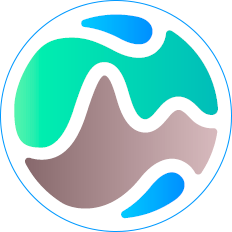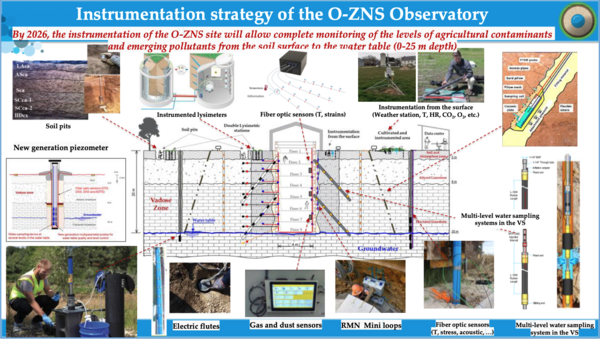O-ZNS Platform: Observatory of mass and heat transfers throughout the continuum “Soil – Vadose Zone – Saturated Zone” of the Beauce aquifer
The observatory (O-ZNS platform) aimed to understand the water-rock-biosphere interactions and the mass (water and contaminants) and heat transfers in the vadose zone (VZ). This observatory, developed around an exceptional well dimensions (depth - 20 m & dimeter – 4m), offers a unique support for deciphering, at the relevant scales, coupled phenomena in the environmental geoscience. Its main target is the understanding of the VZ dynamics for sustainable management of natural resources (soil, subsurface, surface water, groundwater, geothermal energy) within a context of global change. The long-term objective is to identify the key processes induced by the anthropogenic pressure - environmental impact along the soil-aquifer continuum, to improve the predictive modeling tools for public and / or industrial decision supports. The design of the well associated with laboratory experiments and numerical models allows the development/adaptation of innovative geophysical and physico-chemical sensors for quantitative water transfers in VZ, redox barriers, capillary fringe, in a porous/fissured/altered carbonated structure. The research field aimed identifying the level of coupling between the interfacial properties of phases, and the electrical/electrokinetic/electrochemical properties associated with moving fluids and biogeochemical reactions. Interestingly, an important amount of knowledge’s have been shared over the last 20 years bringing together electrokinetic characterizations (redox potential, electron activity, chargeability, etc.) and geophysical techniques including mainly Spontaneous Potential (SP), Spectral Induced Polarization (SIP), etc. A field observatory, associating geochemical and geophysical processes, thanks to the O-ZNS observatory, allows gathering and exchanges between geophysicists, geochemists, microbiologists, and numerical modelers. The current studies with the aim of characterizing the initial state of the O-ZNS site in Villamblain (35 km north-west of Orléans, France) through 9 core drill holes (of 20 to 25 m) and the main well samples allowed the collection of an important rock samples every 20 cm over the entire 20 m depth of the VZ. The geophysical measurements, made from the surface as well as by drilling, consisted in particular of the realization of wall imaging, logging (gamma-ray, gamma-gamma, neutron) and tomography (electrical, seismic, radar). All of these prospections made it possible to obtain information on the lithology as well as on the presence of clay levels, the density, the porosity and the resistivity of the VZ. The laboratory tests carried out on a selection of samples, made it possible to obtain informations on the physical, mechanical and water content characteristics of the rock sample. The properties of water retention and hydraulic conductivity were determined. The first estimation (CFC tracer & modeling tests) of the transfer time suggest duration between 27 to 35 years. During its exploitation (planned for several decades), the project will allows acquiring original, unique and highly resolved 3D data on the mass (water, solutes, organic and inorganic contaminants, gases, ...) and heat (induced by gradients temperature, microbiological reactions, etc.) transfers across the continuum “Soil – Vadose Zone – Capillary Fringe – Aquifer” for environmental issues and georesources needs (water, energy, etc.) under global changes constraints.
Mohamed Azaroual, ISTO Orléans
Top NewsPast event
Séminaire
6
Juni 2024
13h
14h
Salle du conseil

